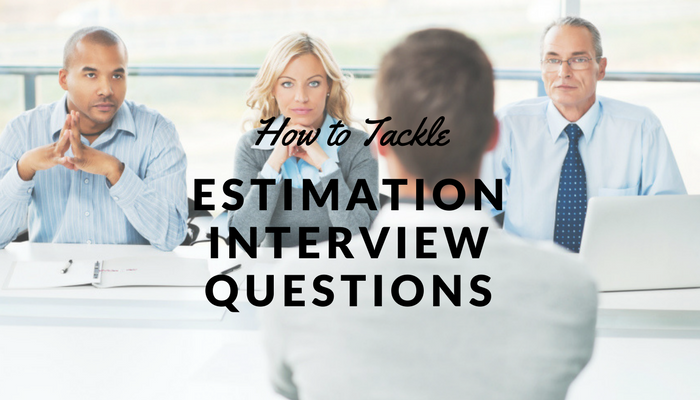“How would you estimate the number of people living in Iowa?”
“How would you estimate expenses if you were planning the next Olympics?”
“How many people could you fit on a football field?”
“If a lottery ticket costs $3 and pays $12 if you win, what is the probability of winning?”
These are questions I received while interviewing for actuarial internships. I never received more than 1 of these questions per interview, but your response can make or break the interview.
The most important thing to remember about estimation questions is: employers aren’t looking for a “correct” answer. They are looking for a few key qualities:
- Problem-solving skills – can you logically think through a difficult, open-ended question to develop a solution?
- Reasonable assumption-setting – given your problem-solving approach, can you set reasonable assumptions and justify them?
- Communication skills – can you clearly explain your thought process?
Unlike behavioral questions, you can’t anticipate which estimation problems you’ll receive. That doesn’t mean you can’t prepare for them.
You can follow a few general principles to think through any of these estimation questions and impress the interviewer:
1. Don’t focus on getting the correct answer
I mentioned this above, but it’s worth repeating.
Especially as a student, you are trained to think in terms of black-and-white with math problems – your answer is either right or wrong.
Not only does this miss the point of these estimation questions, but it puts unnecessary pressure on you. I bombed my first estimation interview question because of this pressure. My internal dialogue went something like:
“I don’t know how much it costs to plan the Olympics.”
“Should I be thinking in terms of millions or billions?”
“There is no way I’m going to come close to the correct answer.”
And I proceeded to stumble my way through a response. Not surprisingly, I didn’t get a follow-up interview.
Notice that my internal dialogue was entirely focused on the final answer. I focused on what I didn’t know, instead of what I did. I needed to flip the script, leading us to the next principle…
2. Deconstruct the question
The first step to solve any challenging problem is to break it into manageable chunks. Let’s say we’re asked for the number of Starbucks stores in the United States.
Most of us don’t have this information memorized. However, what if we broke this question down into 3 smaller questions:
- How many Starbucks stores are in your town?
- How many people live in your town?
- How many people live in the United States?
These questions are easier to answer. My hometown has 1 Starbucks store, and it has a population of about 25,000. Knowing that there are around 300 million people in the United States, I would estimate:
300,000,000 people / 25,000 people per store = 12,000 stores
After doing a quick online search, I found that there are around 13,000 Starbucks in the United States as of 2016 (total company-operated + licensed stores). The estimate ended up being close, although that’s not the point.
The interviewer is paying more attention to the thought process – how did I break the problem into smaller chunks? Did I do so in a logical manner? What assumptions did I use and were they reasonable?
3. Explain the assumptions & limitations
When you’re answering a difficult estimation question without the help of outside resources, you’ll end up making simplifying assumptions. Again, the point is not to be correct in your assumptions, but to be thoughtful about how you set them.
In the Starbucks question above, I broke the question into three unknown quantities: the US population, my hometown population, and the number of Starbucks in my hometown.
I took a sampling approach to answer the question. My method implied that my hometown was a representative sample of Starbucks per capita across the US. I’m sure that assumption is inaccurate, but that’s okay as long as I address this limitation.
There are also sources of error in the quantities I used for my variables. I’m not using exact population numbers, and I may not remember the correct number of Starbucks stores in the town. These estimates greatly affect my answer.
When you’re explaining your estimation process, it’s important to not only explain your assumptions but also address their limitations and sources of error.
Summary
Companies like to ask open-ended estimation questions to see how you approach challenging and unexpected problems.
You can’t predict what they will ask, but you can practice the general framework of deconstructing the question, setting assumptions, and communicating the limitations of your process.
The key is to remain composed while responding. The interviewers know they are asking a tough question, and they will be especially impressed if you piece together a logical response in a confident, well-spoken manner.
I recommend searching for “estimation interview questions” and practicing your response to several questions. You’ll be much more comfortable in a real interview if you already have experience responding to difficult questions of this nature.
The goal is not to prepare for any specific question, but instead, become more comfortable with difficult interview questions.
Study Smart, Pass Fast, Live Life
Mike & Roy

